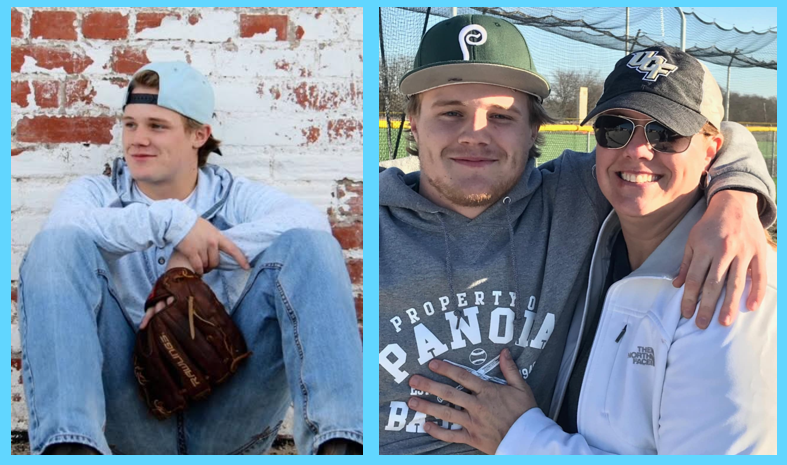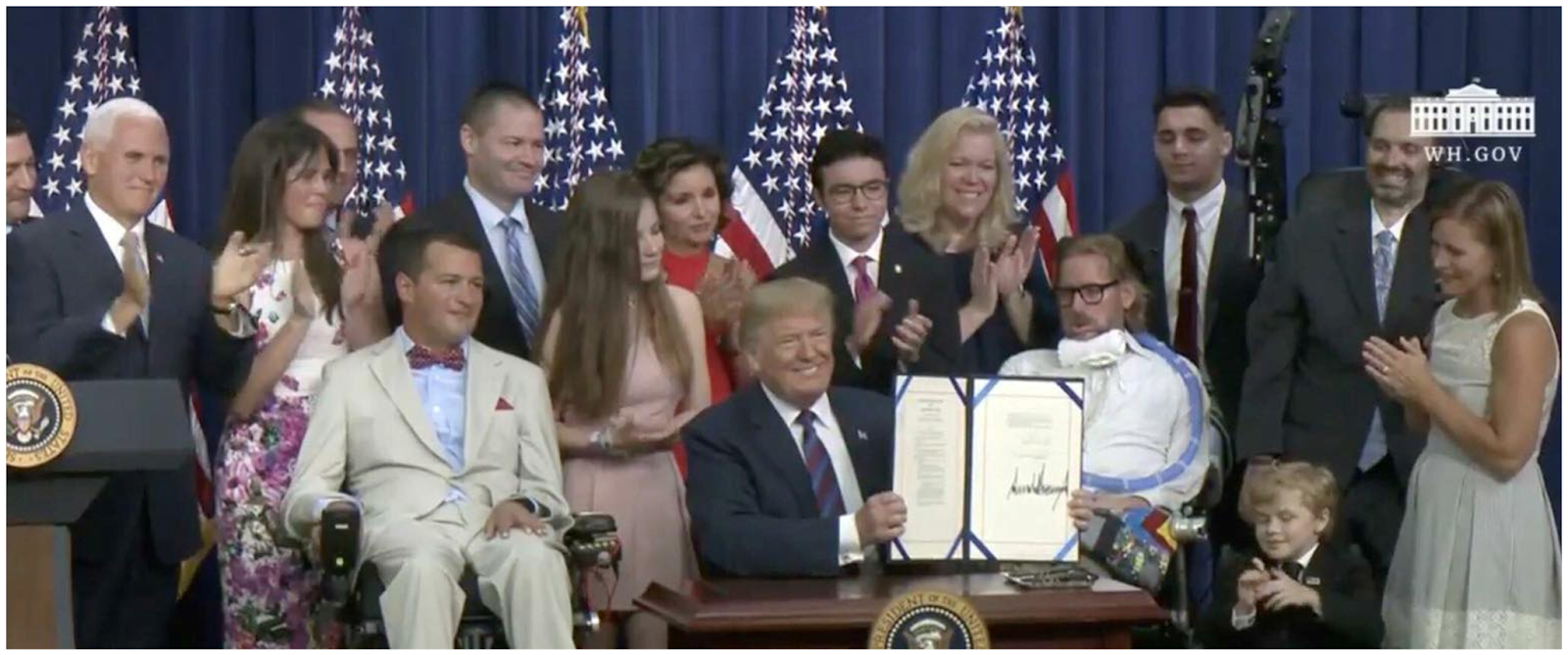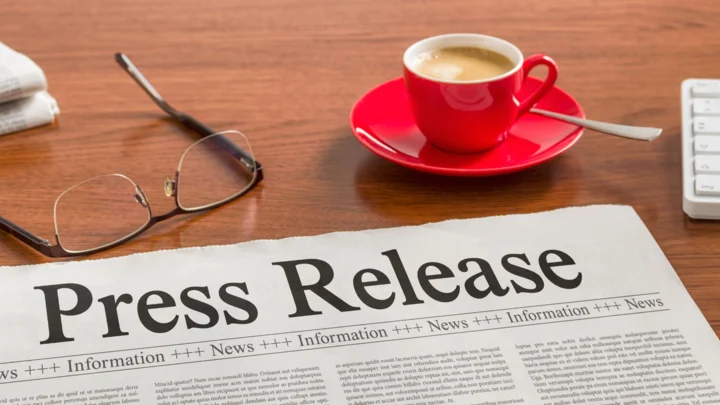The Real-World Evidence in the Citizens’ Petition Supports the Accelerated Approval of the Stem Cell Therapy that Was Helping People with ALS Live Longer and Breathe Better
NEW YORK CITY, NY / ACCESS Newswire / July 14, 2025 / Every neurologist who specializes in neuromuscular medicine remembers their first patient… the first time you have to deliver an ALS diagnosis. How do you tell someone that they will lose the ability to walk, talk, move, eat, drink, swallow, and eventually, breathe? There is no easy way to tell someone that ALS is always fatal and there are no disease-modifying treatments.
In every physician’s heart there is that first patient that you always remember. And then another patient comes along and imprints on your soul. For me, after 15 years of practice, that patient was Kade Simons. I share his story jointly and with the permission of his mother.
Kade Simons died of ALS on August 4, 2024 – just a week before his 27th birthday. His passing was the most devastating in all my years as a neurologist. Some patients just settle in your heart, make a home there and never leave. Kade did that.
Kade, his mom Kandy and I met at our first telehealth appointment in December of 2022. Right away, Kade made it clear that he didn’t care much for doctors. But somehow we clicked. He saw I was wearing black nail polish and this resonated with him, so he took a liking to me. At the next appointment, my nails were no longer black. With his mischievous grin and his twinkling blue eyes, he gave me a little side-eye. It made me think about those small things in life that we, as humans, find connection in. In hindsight, I realize just why he liked my nail polish and it crushes my soul. Why? Because he was a mere 6 years older than my own daughter. SIX YEARS. He looked at me the way my own children look at me when maybe I am a little on trend and they find me relatable. And now I realize why Kade took a special place in my spirit; because he was a child and this tore at my maternal core.
No mother should ever have to bury a child. I wish that everyone on the NurOwn Advisory Committee two years ago would have been forced to look into the eyes of a vibrant 20-something year-old and reconcile that they ignored his compelling testimony. That is the testimony Kade and Kandy shared with me.

Kade’s Experience with NurOwn
At that first appointment, I sat in amazement as Kandy and Kade shared the story about Kade’s participation in the NurOwn stem cell trial at Mayo. Kade received 3 doses of NurOwn from July to November of 2019. Although the trial had not yet been unblinded, Kade and his mom were adamant that he was in the treatment arm.
Kade felt NurOwn work almost immediately. He told me that his fasciculations stopped. They showed me videos. After his first dose, he felt his foot “popping up” when he walked. Translation: his foot drop was improving as his brain’s messages were getting delivered again to his foot muscles. Kandy then narrated a video where Kade exclaimed that he was having to get used to the renewed strength in his legs that he hadn’t experienced in a while. With every dose of NurOwn, Kade felt stronger, walked easier, had more range of motion, less spasticity, clonus and cramping. His physical therapist agreed.
The more we talked, the more I became intrigued. Kade had ALS onset in three regions: bulbar and both upper and lower limbs. Consistent with his multi-loci onset and ALS natural history, Kade was initially a fast progressor. But his medical records showed that his lethal progression abruptly slowed after he started receiving NurOwn.
And so important and “clinically meaningful” to any 24-year-old, Kade was still able to use his hands to text and to play video games with his brother and friends – maintaining that social connection with his peers. In my professional experience, all of this was extremely unusual for someone four years post-diagnosis.
Kade boasted that he was still able to eat pizza and Jersey Mike’s subs – something that both the neurologist and the Italian girl in me appreciated. Eating without limitations four years after diagnosis is highly unusual in ALS. But it’s almost unheard of in someone who began their ALS journey with bulbar onset.
But most of all, I was astounded that Kade was still breathing on his own without the assistance of non-invasive ventilation. He was sleeping laying flat (something that doesn’t happen when the nerves innervating your diaphragm muscles start to die). Kade’s pulmonologist agreed about the rarity of Kade’s normal respiratory function.
Kade had been a college baseball player. As an athlete, Kade made quite clear to me that he knew his body. He knew when it worked and he knew when it didn’t. He was insulted that people would doubt when he said NurOwn improved how he functioned. Kandy too said, “I watched Kade improve on NurOwn.” Just as Kade knew his body, a mom knows her child.
Kade asked me if I believed them. I did.
In the months after that first appointment with Kade, I had the chance to meet with several other patients in the NurOwn trial. Many of these patients reported similar improvements and their medical records mirrored those experiences. The more patients I met, the more records I reviewed, the more I believed in NurOwn’s efficacy. The people who thought they were in the placebo arm (or were non-responders) had medical records that reflected their decline; but those who were as adamant as Kade that they were in the NurOwn arm had medical records that reflected a stark contrast.
My Expert Opinion as a Neuromuscular Specialist with Documented RWE
I promised Kade – in life – that I would try my best to advocate for him and all others brutalized by this disease.
When it came time for the NurOwn Advisory Committee meeting in 2023, I was compelled to share, not just my clinical observations outside the trial (evidence the FDA calls “real-world evidence”), but also my expert opinion as a neuromuscular specialist who has treated well over a thousand people with ALS. Because of my tele-neurology practice, I suspected I had seen more NurOwn recipients than any other neurologists besides the trials’ investigators. And uniquely, I saw them years after the 28-week trial ended. Thus, my observations could provide clinical evidence about the durability of my patients’ responses on NurOwn.
I submitted a Public Comment to the FDA sharing my professional opinion that NurOwn worked on some people.
“I have been working in the ALS clinical space and in ALS multidisciplinary clinics for over 15 years….
I have seen the full breadth of clinical constellations playing out over time. What I have not seen, though,
is anyone with significant functional improvement from a declining baseline;
I have not seen patients rise from plateaus. It does not happen in the natural course of ALS.
It did happen with the introduction of NurOwn.
The real-world evidence could not be more striking.
I have known patients nearly immobile who gained some functionality in their gait,
patients with severe dysarthria become intelligible, patients who could not manage the fine motor skill
needed to button or zipper, finally able to dress independently.”
I implored the FDA to consider the risk of a Type II error – failing to approve a drug that does work.
“I implore you to open your minds and to take my clinical observations and this real world evidence
just as you would any solid data set from a trial. Consider this evidence as if it were your patient
you observed in your own clinic…. Not all evidence manifests in the confines of a trial.
Listen to the narratives of these patients and their physicians. NurOwn works.
The science of the trial, the art of our clinical observations and attention to our patients’ accounts
demonstrates the truth of this statement.… Please allow this treatment to come to market
with a phase 4 post-marketing trial. Let other neurologists witness what I have seen in my own patients.
Let thousands more patients have a chance to benefit from NurOwn.”
I knew death would be imminent for so many of my patients if they couldn’t get more NurOwn. They had already defied the odds. I knew the ALS clock wouldn’t wait five more years for another Phase 3 trial. Kade had already lived nearly four years past his last dose of NurOwn in 2019.
The Citizens’ Petition
Kade was strong, determined, and courageous, and so too is his mother Kandy-who, despite her grief over the loss of her son, is a Petitioner in the recent Citizens’ Petition. This 309-page legal document seeks accelerated approval of NurOwn based on powerful survival and respiratory data, along with real-world evidence from the now-unblinded trial participants.
The Citizens’ Petition relies upon the promise of the 21st Century Cures Act, wherein Congress encouraged the FDA to use real-world evidence and patient experiences – data from actual patients like Kade and the EAP participants. In 100% terminal and heterogeneous rare diseases, every story matters and every type of evidence matters.
When the trial was unblinded after the Advisory Committee meeting, I was not surprised to learn that – almost without exception – every one of my patients accurately predicted if they received NurOwn or placebo. As the Citizens’ Petition states:
“When people are dying, they know when a drug helps them live.
When people are becoming paralyzed, they know when a drug helps them move again.
And when people can’t breathe without a non-invasive ventilator,
they know when a drug helps them breathe again.”
The new data in the Citizens’ Petition illustrates that the FDA’s focus on the primary endpoint alone overlooked the totality of the evidence, and I believe resulted in a Type II statistical error. The totality of the evidence included: the data of responders earlier in progression, objective biomarker data, compelling patient experiences, neurologists’ observations, and expert opinions, like those detailed in the 309-page Citizens’ Petition. For example, the FDA failed to heed the opinions of esteemed ALS clinical trialists with four decades of experience like Dr. Robert Brown of UMass Chan School of Medicine and Dr. Anthony Windebank of Mayo Clinic. They opined that a “significant number” of people had a “clinically meaningful” response to NurOwn, that it caused progression-free survival in some, and even helped some regain function – just as Kade told me.
Although Kade was not chosen to receive additional doses in the Expanded Access Program (EAP), his data too is informative and it was included in the Citizens’ Petition. I can corroborate Kade’s submitted data:
Kade had symptom onset in three regions concurrently. Kade was a fast progressor, losing 1 point per month
before receiving NurOwn. Kade’s first bulbar symptoms occurred in May of 2018…. By the time Kade received
NurOwn in July of 2019, his ALSFRS-R score had plummeted to 34…. NurOwn caused the most durable impact
on Kade’s respiratory and bulbar function…. Kade didn’t get a feeding tube until February of 2024, and even then
he still continued to eat things like pizza and Jersey Mike’s Subs up until a few months before his death in
August of 2024. Most impressively, Kade did not use NIV up until the time of his death.
In addition to the long-term data from people in the Phase 3 trial and EAP, the Citizens’ Petition also submitted the following unprecedented survival and respiratory data:
-
100% five-year survival in EAP vs. 20% natural history
(p-value = ~0.000335 (one-sided) or ~0.000671 (two-sided) -
EAP Median ≈ 7 year Tracheostomy-free survival (60-103 month range) vs. 30 month median in ALS natural history
-
Progression-free survival (range up to 17 months)
-
Long-term slowing of ALS progression of up to 85%
-
Halting of respiratory decline
-
Range of 5-8+ years in time-to-NIV vs. 15-27 months natural history
Notably, comparing the above survival data to exhibit A & B in the Petition, the NurOwn survival data meets or beats the survival data supporting the accelerated approval of dozens of cancer therapies.
The Citizens’ Petition also cites multiple studies that conclude that almost no one with multi-loci ALS onset survives five years. But Kade did.
Kade beat the bulbar onset natural history data as well. On pages 29-32, the Petition reports that the median lifespan for people with bulbar onset is approximately 2 years from symptom onset and 1.5 years from diagnosis. This is consistent with my professional experience. The Petition reports that NurOwn recipients who had bulbar onset lived approximately 3.5 years longer than the median in ALS natural history.
Applying these above peer-reviewed criteria to Kade, I can confirm, as Kade’s treating neurologist, that:
-
Kade Lived “trach-free” 78 months (6.5 years) from symptom onset vs. the 2-year average for bulbar onset
-
Kade’s progression slowed from more than 1 point per month on the ALSFRS-R down to 0.16 points per month
-
Kade chose not to use a bi-pap to breathe and thus at the time of his death (68 months from diagnosis), Kade’s time-to-NIV dwarfed the ALS natural history of 15 months for fast progressors and the 13.5 months for people with bulbar onset.
As Kade’s treating neurologist, these data align with the Public Comment that I submitted in 2023. They also align with Kandy’s Public Comment and testimony that she shared at the NurOwn Advisory Committee meeting. These data in the Citizens’ Petition further strengthen my expert opinion and resolve that NurOwn helped Kade breathe better and live longer.
It is a tragedy unlike anything I have experienced in my career that Kade was denied continued access to the stem cell therapy that was helping him live.
Gold Standard Science and Common Sense Support Approval
I am heartened to read that Commissioner Makary is committed to marry gold standard science and common sense.
As such, I implore the FDA to consider the new and unprecedented survival and respiratory data that is reasonably likely to predict a clinically meaningful impact. Listen to the opinions of the neurologists who treated the patients. But most of all, listen to the patients. They are the only ones who know what it feels like to die a little more each day. And the new data proves that they were right. They knew when NurOwn helped them live.
Thus, substantial evidence supports the approval of NurOwn. Please approve NurOwn with a Phase 4 post-marketing study. Please show my patients with ALS the same compassion and humanity that the Oncology Center of Excellence shows cancer patients.
My Promise to Kade
Today, with this Press Release, I renew my promise to Kade. As I did during his life, I will continue to do after his death. For whatever number of years God blesses me to continue helping people with ALS, I will move forward with the same resolve that Kade and his family have shown.
Please hold space in your heart today for the 26-year-old man with the resolve and courage that I could never fathom possessing.
God rest him.
About Danielle Geraldi-Samara, MD
For over 15 years, Dr. Geraldi-Samara has diagnosed and treated people with ALS. She attended medical school at the State University of New York at Syracuse and completed her residency and neuromuscular fellowship at the Mount Sinai School of Medicine. With the goal of bringing ALS care closer for local patients, Dr. Geraldi-Samara helped establish an ALS/Neuromuscular clinic from the ground up at NYU-Brooklyn. She also served as a supervising Neuromuscular Specialist at Northwell Health’s multidisciplinary ALS clinic in New York.
Dr. Geraldi-Samara counts patient relationships as the driving force in her career. Because of the inequity in ALS regulatory policy and law – and Kade’s inability to get more of the drug that was helping him live – Dr. Geraldi has resumed her academic career, where she is currently working on a master’s degree in bioethics. While continuing her neuromuscular practice, she also wants to work to transform regulatory policy for patients with terminal rare diseases like ALS.
About Kandy Simons
Kandy Simons is the mother of Kade Simons. She has become a patient advocate to right the wrongs that were inflicted upon her son and her family. She lives in Oklahoma City, Oklahoma with her husband Mitchel Simons as well as her only remaining child, Kruz Simons.
About NurOwn
Developed by Brainstorm Cell Therapeutics, NurOwn is a mesenchymal stem cell therapy marries the restorative powers of stem cells with the regenerative powers of neurotrophic factors. NurOwn is made from your body’s own stem cells harvested from a bone marrow aspiration. They are then treated in a lab and supercharged to release neurotrophic factors. Once injected directly into the CSF, your stem cells work like a Fed Ex truck, delivering nano-packages of neurotrophic factors and immunomodulatory cytokines directly to the sites of the motor neurons damaged by ALS. The neurotrophic factors act like “Miracle-Gro” for your neurons.
Contact :
-
Danielle Geraldi-Samara, MD
(mail to: DGSneuro@gmail.com) -
Nicholas Warack, Esq.
(mail to: Veterans4NurOwn@gmail.com) -
Mitze Klingenberg, BSN RN
(mail to: NurOwnWorks@gmail.com)
Copy of Citizens’ Petition and Exhibits Filed with the FDA:
Join Dr. Geraldi, Kandy Simons and many others in urging the FDA to approve NurOwn for people with ALS. The 309-page Citizens’ Petition includes the data supporting approval as well as easy-to-read charts and graphs that show how NurOwn extended lifespan and improved function for people with ALS. You can see the data and graphics, as well as Petitioners’ stories at: https://www.nurownworks.com/
SOURCE: NurOwn Citizen’s Petition
View the original press release on ACCESS Newswire


